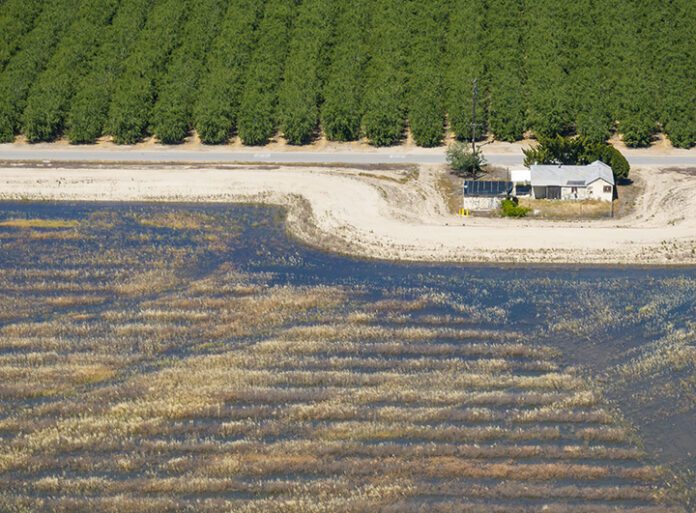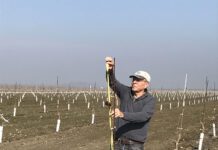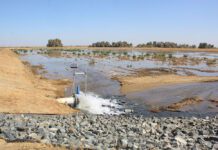California’s San Joaquin Valley faces some of the largest groundwater deficits in the state, putting the region on the frontlines for implementing the landmark 2014 Sustainable Groundwater Management Act (SGMA). Since 2014, local water agencies have been working hard to form groundwater sustainability agencies (GSAs) and complete plans for addressing the undesirable effects of overpumping. They’ve also begun the difficult work of implementing these plans, which collectively place a heavy emphasis on groundwater recharge as a key strategy to address overdraft.
In a recent survey, we asked valley water managers how groundwater recharge went during 2023, a very wet year, and we found recharge efforts expanded significantly. The amount of water put toward recharge in the San Joaquin Valley increased by 17%, compared to a similar survey conducted in 2017 (which was also a very wet year). This is an impressive increase, and it indicates some significant changes are underway in the valley.
Between 2017 and 2023, recharge methods themselves didn’t change dramatically. In both years, roughly half of all survey respondents used four main methods of groundwater recharge: in-lieu recharge (replacing groundwater use with surface water use), applying water in dedicated recharge basins, sending it through unlined canals or streambeds, and spreading it on farmland. The key change in 2023 was that more agencies were applying recharge water in dedicated basins, and that overall recharge volumes were up, which is consistent with recent investments in this key local infrastructure. Over half of all recharge still happens in dedicated basins, though volumes grew for in-lieu recharge as well.
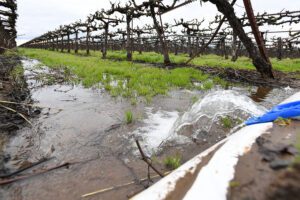
That said, recharge methods are evolving. While the share of agencies that report spreading water on farmland in their area has not changed much since 2017, the amount of water recharged by this method nearly doubled from 2017 to 2023. Interest in this method has grown dramatically, and a practice that was once regarded warily by many growers has now moved firmly into the mainstream. Although spreading water on farmland accounts for less than 10% of total recharge volumes, this is the area where we saw the largest growth. There may also be more recharge happening on farmland than was captured in our survey responses as this is one of the more difficult methods to track closely.
Overcoming Remaining Barriers
Some barriers to on-farm recharge remain, including the method’s incompatibility with existing irrigation systems and concerns about impacts on crop yields. In 2023, however, survey respondents reported that some of the technical difficulties associated with recharging on farmland have lessened in recent years. Crucially, some agencies have rolled out incentive programs for landowners, including offering pumping or allocation credits or even paying growers to put water on fallowed land. This has helped increase grower familiarity with the techniques, improve accounting systems, and meet grower demand for crediting schemes, but all signs point toward significant room for growth in recharge on farmland.
There are several key areas that growers, together with federal, state and local agencies, can emphasize to overcome barriers to recharging on farmland and bolster local groundwater supplies:
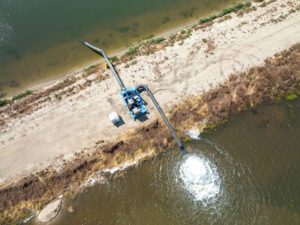
Groundwater accounting is key
Understanding the amount of recharge that’s occurring (and where) is fundamental to crediting for recharge activities and other aspects of groundwater sustainability. Groundwater accounting is a critical aspect of managing groundwater sustainably, but we found around 20% of rechargers still do not use any accounting method to track their recharge. Growers and managers should continue working together to improve groundwater accounting at the local level.
Groundwater allocations help, too
In overdrafted basins, accounting systems can also go a step further by setting up groundwater allocation programs, which set a cap on how much pumping is allowed each year. Early adopters of allocations did well on landowner recharge in 2023, and mindsets are shifting. Whereas allocations were once regarded solely as a punitive measure, they are increasingly recognized as an important incentive tool. Allocations also facilitate groundwater trading and banking, which reduce costs for water users and help to manage risks from drought.
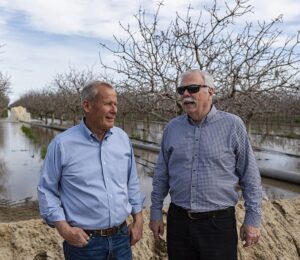
Advance preparation pays off
Agencies that managed to stash water underground in 2023 told us such a successful recharge season wouldn’t have been possible without years of planning and preparation (two-thirds of our survey respondents cited such planning as a key enabler of their recharge efforts in 2023). Growers and managers should continue to collaborate on improving local, district-level planning for recharge. Planning could include assessment of the financial feasibility of different recharge options and forming recharge partnerships to leverage resources and opportunities across agencies and stakeholder groups. Partnerships can include sharing water, funding, local conveyance infrastructure and suitable land for recharge.
Boost incentives
Incentives, such as groundwater pumping credits or price reductions for recharge water, helped drive the large increase in volumes recharged by spreading water on farmland from 2017 to 2023. More than two-thirds of the agencies where growers are recharging by spreading water on farmland reported using at least one type of incentive in 2023, and half reported using pumping credits.
Remove regulatory barriers
Managers pointed to some state actions, namely executive orders to make diverting flood flows easier and support for acquiring emergency pumps and equipment for siphoning floodwaters, as being especially helpful. More remains to be done to refine the rules on when and how much water can be safely diverted, and to address other regulatory barriers such as acquiring permits for project construction and operation. Local and state agencies can work together to reduce regulatory barriers for recharge.
Infrastructure matters
Local agencies, with state support, can also evaluate smart plays for infrastructure, which remains an important barrier to groundwater recharge. Half of all 2017 survey respondents cited at least one infrastructure barrier, and this was still very much on the radar in 2023. By evaluating where improvements are needed, locals can optimize conveyance to get recharge water to suitable areas and look at options for expanding the role of surface storage to help slow water down. Groundwater sustainability agencies will also need to collaborate to address deficiencies in regional conveyance where it crosses basin boundaries.
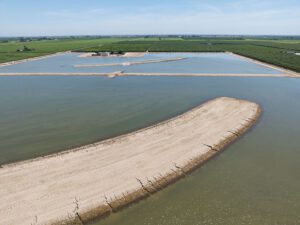
To expand recharge on farmland, growers can equip themselves with dual-use irrigation systems, and managers can offer technical support. Our results suggest growers are increasingly finding solutions for technical problems around spreading water on farmland. However, managers still raised concerns about grower know-how in this area and the cost to growers for retrofitting, maintaining and installing adequate irrigation systems. State and federal funding programs and recharge incentives can help overcome these cost concerns, but growers with suitable lands should equip themselves to apply high-volume flows and lean on their local agency for technical support.
Our findings paint a hopeful picture for future groundwater management and agriculture in the valley. In six short years, valley rechargers have made many advances: Recharge volumes are up, interest in recharge is high, and some of the technical difficulties of newer practices like spreading water on farmland have been ironed out. Both local and state policies are evolving to reflect accumulating on-the-ground experience.
More remains to be done, of course. Our research shows up to 3.5 million acre-feet of additional water might have been available for recharge in 2023 in the San Joaquin Valley. Tackling the remaining barriers can help growers better manage water resources through both wet and dry years while keeping their local agencies on track to meet their groundwater sustainability goals.







